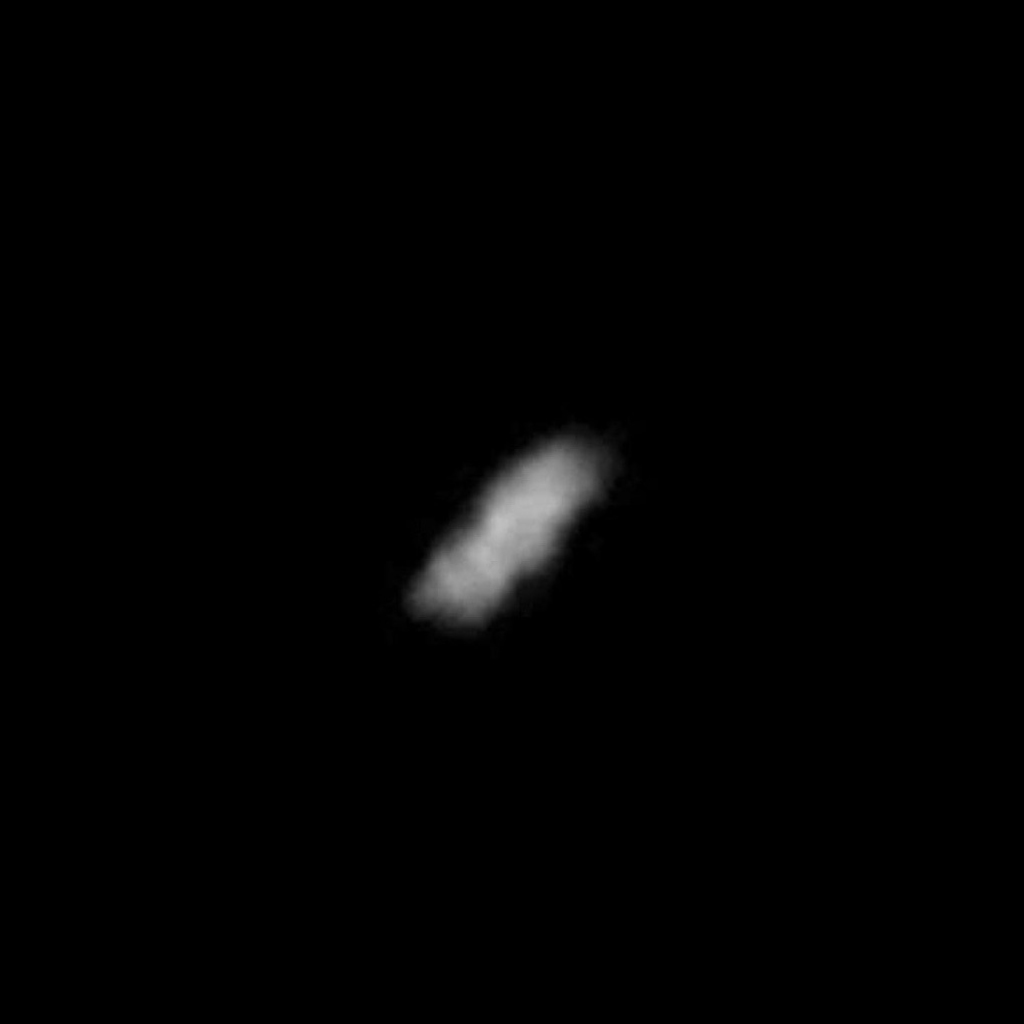Naiad, a moon of Neptune

Naiad from Voyager 2 in 1989. The moon appears stretched due to its movement while image was being taken, image credit: NASA
29,998 miles
38 miles
Naiad is a small moon of Neptune. It is one of Neptune's inner moons and is the closest moon to orbit the planet. Naiad has a diameter of approximately 60 kilometres (38 miles). It orbits Neptune at a distance of just over 48,000 kilometres (30,000 miles). A length of an orbit takes only 7 hours which means that it orbits Neptune faster than the planet spins.
Naiad was discovered in 1989 through images taken by the Voyager 2 spacecraft. It was the final moon discovered from Voyager 2's flyby of Neptune, the eighth moon overall. Neptune is now known to have 14 moons.
Naiad is believed to be the fragments of an earlier moon that was destroyed when Neptune captured its largest moon Triton. Parts of that destroyed moon joined back together to form Naiad and several of Neptune's other inner moons.
It is thought that Naiad itself will be destroyed at some point in its very distant future. Its orbit is likely to decay which will bring it closer and closer to Neptune until it either falls into Neptune's atmosphere or gets torn apart by gravitational forces. It will possibly form a ring.
Naiad is classed as a regular prograde moon. Regular moons are moons that formed out of materials spinning around a planet. Irregular moons are ones that were captured by a planet. A prograde moon is one which orbits in the same direction of the rotation of its host planet.
Naiad was named by the International Astronomical Union and received its name on 16th September 1991. It is named after the Naiads. In Greek mythology, the Naiads were water nymphs. They had the ability control the flow of water and were often associated with sources of fresh water like fountains, springs, streams and brooks. They are often depicted as beautiful and lighthearted females.
As Neptune is the Roman god of the sea, all of its moons have water-related names.
Naiad is one of very few moons in the solar system not to be named after an individual character. Before it received its official name, it was identified as S/1989 N 6. It can also be referred to as Neptune III.





